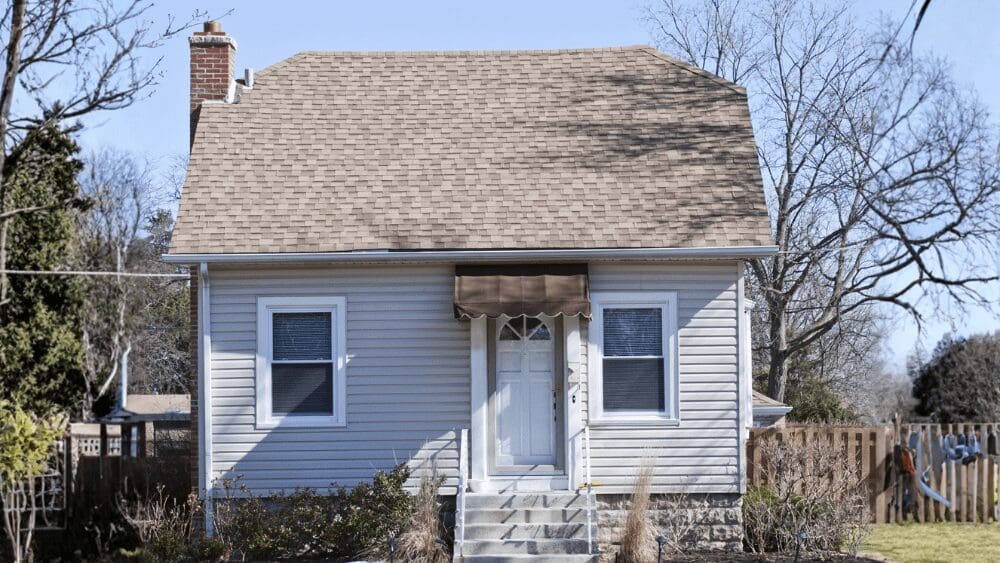
You’ve found it, the perfect home. The problem? You have to sell your current house first, so you’re at risk of losing the new home to another buyer. You’d prefer to make a strong, non-contingent offer right now to win the house (and you only move once). One traditional solution to this buy-sell roadblock is a bridge loan. But there are also more modern and simple Buy Before You Sell programs that streamline the entire process. In this post, we review strategies that allow you to make a competitive, non-contingent offer without selling first and avoid a double move.
The big challenge of buying and selling a home in one move is coordinating the timing and finances, which creates logistical headaches and uncertainty. If you buy too soon, you could be stuck with two mortgage payments. If you sell too soon, you might find yourself without a home, forced into paying for temporary housing. To protect against these pitfalls, many buyers make a contingent offer, which means their offer to buy the new home is conditional on the sale of their current house. While a home sale contingency offers you a safety net, it significantly weakens your offer. Most sellers want a fast and certain path to closing, so they favor purchase deals without this clause. A non-contingent offer can give you a powerful advantage, especially in competitive markets. If you’re like most homeowners, the bulk of your wealth is tied up in your home’s equity. When you’re ready to buy a new home, accessing that equity for a down payment can be difficult until your current property is sold. This financial gap forces many people to wait, increasing the risk of missing out on their newfound home. Adding to this is the fear of being unable to afford two mortgages at once. If you sell your current home before buying a new one, you face the hassle and expense of a double move. This often means moving your belongings into a storage unit and finding a short-term rental. Packing and unpacking once is stressful enough; doing it twice in a short period is a scenario most homeowners want to avoid. The goal is simple: you only move once. A bridge loan is a short-term loan that uses the equity in your current home to provide the funds needed to buy your next home before the first one sells. As the name suggests, it “bridges” the financial gap between the two transactions. This option can allow you to act quickly on a new property. Bridge loans allow you to borrow a portion of your current home’s equity, typically up to 80% of its value. You can use these funds for the down payment on your new home. Once your old home sells, you use the proceeds to pay back the bridge loan. These loans usually have a term of six to 12 months. To qualify, lenders will assess your financial health, including your credit score, debt-to-income ratio, and the amount of equity you have. Because you will be carrying debt on two homes plus the bridge loan, the qualification requirements are often strict. Here’s a quick review of the key pros and cons of using a bridge loan: To learn more, see our post: I Want to Buy a New House. Do I Have to Get a Bridge Loan? Besides bridge loans, homeowners can use other financial products to tap into their home equity for their next purchase. These options also come with their own set of pros and cons. A Home Equity Line of Credit (HELOC) is a revolving line of credit that lets you borrow against your home’s equity as needed. It functions like a credit card, allowing you to draw funds up to a certain limit and only pay interest on the amount you use. A home equity loan provides a lump-sum payment based on the equity in your home. Unlike many HELOCs, it comes with a fixed interest rate and predictable monthly payments, making it easier to budget for. To learn more, see our post: HELOC vs. Home Equity Loan: Comparing Equity Options
Buy Before You Sell programs are innovative services designed to eliminate the risks and hassles of traditional methods. These programs allow you to unlock your home equity upfront, so you can buy your next home and move in before you sell your old one. As an AI-driven, award-winning company, HomeLight offers one of the most complete buy-before-you-sell solutions in the U.S. HomeLight’s Buy Before You Sell program simplifies the complex process of buying and selling, making it a straightforward and streamlined experience. It empowers you to make a strong offer and gives you peace of mind. Watch the short video below to see how it works: HomeLight Buy Before You Sell makes it easy for you to unlock your equity and make an offer on your next home, all in one program with three easy steps. While both solutions help you buy a new home before selling, HomeLight’s program offers distinct advantages that remove the biggest risks associated with a bridge loan. While other lender programs might focus solely on providing financing, HomeLight acts as a comprehensive partner. We combine an innovative financial tool with expert agent matching and a guaranteed outcome, creating a truly seamless and secure transaction. The best strategy for buying before you sell depends on your financial situation, risk tolerance, and local market dynamics. Ultimately, the goal is to transition to your next chapter with confidence and ease. If you’re ready to take the next step, or just want to consult with an industry expert, you can find a top agent in your area who can help you explore all your options, from traditional sales to modern solutions like HomeLight’s Buy Before You Sell.Why buying and selling at the same time is hard
The contingency conundrum
The financial squeeze
The double move drawback
Traditional solution #1: The bridge loan
How bridge loans work
Pros
Cons
Make a strong offer: A bridge loan gives you the funds to make a non-contingent offer without selling first, which is much more attractive to sellers.
Higher costs: Bridge loans typically come with higher interest rates and origination fees compared to traditional mortgages, making them a more expensive option.
Avoid a double move: By securing your next home before selling your current one, you can coordinate a seamless transition and move directly from your old home to the new one.
Financial risk: You may need to carry three loans at once: your original mortgage, your new mortgage, and the bridge loan. If your home doesn’t sell quickly, the payments can become overwhelming.
More flexibility: You won’t feel rushed to accept a low offer on your current home just to meet a deadline. You have time to wait for the right buyer.
Strict qualifications: Lenders generally require excellent credit, a low debt-to-income ratio, and substantial home equity to approve a bridge loan.
Traditional solution #2: Common equity options
Home Equity Line of Credit (HELOC)
Pros
Cons
Lower borrowing costs: HELOCs typically have lower interest rates and fees than bridge loans. They can also offer greater flexibility in how much you borrow, and your current lender may have a HELOC program for existing mortgage borrowers.
Payment and lender hurdles: You’ll still have to manage payments on your original mortgage and the HELOC. Furthermore, many lenders are hesitant to approve a HELOC if your home is already on the market.
Home Equity Loan
Pros
Cons
Predictable cost and payments: The fixed interest rate offers stability compared to the variable rates common with HELOCs. This can help you plan your transitional budget.
Payment and lender hurdles: Similar to a HELOC, it adds another monthly payment to your budget, and securing one while actively trying to sell your home can be challenging.
A modern solution: Buy Before You Sell programs
How HomeLight’s Buy Before You Sell works
Benefits of HomeLight Buy Before You Sell vs. a bridge loan
Which path is right for you?



